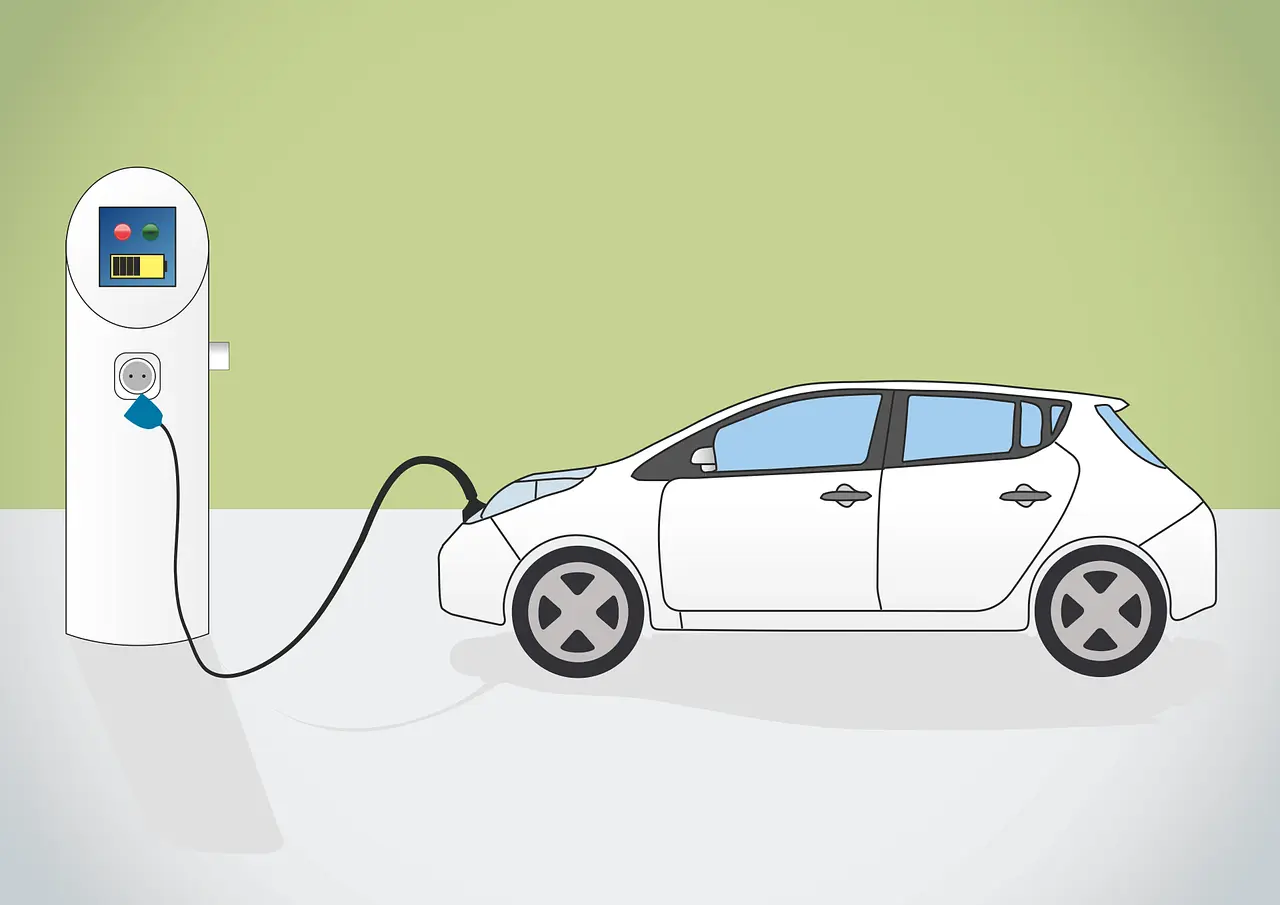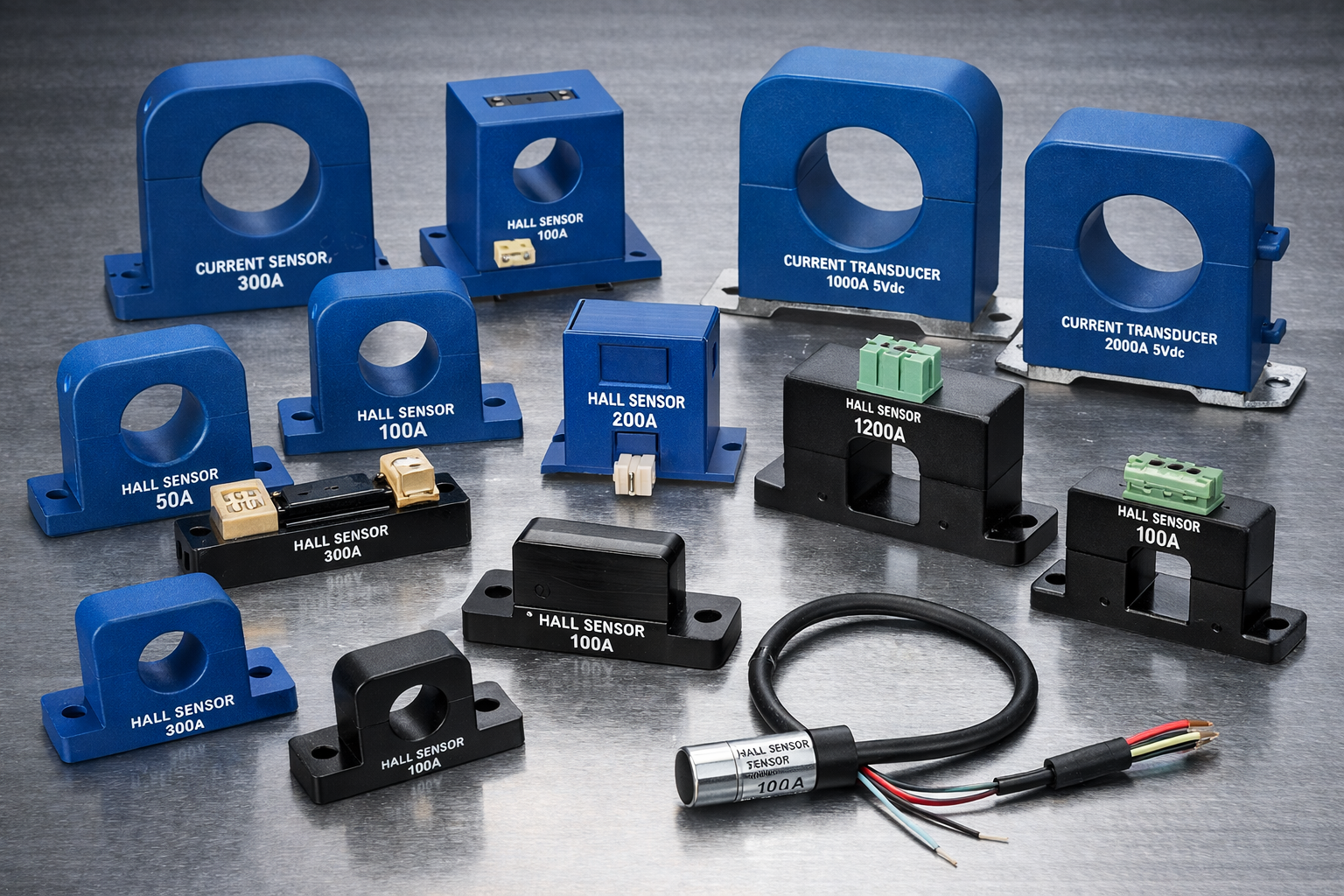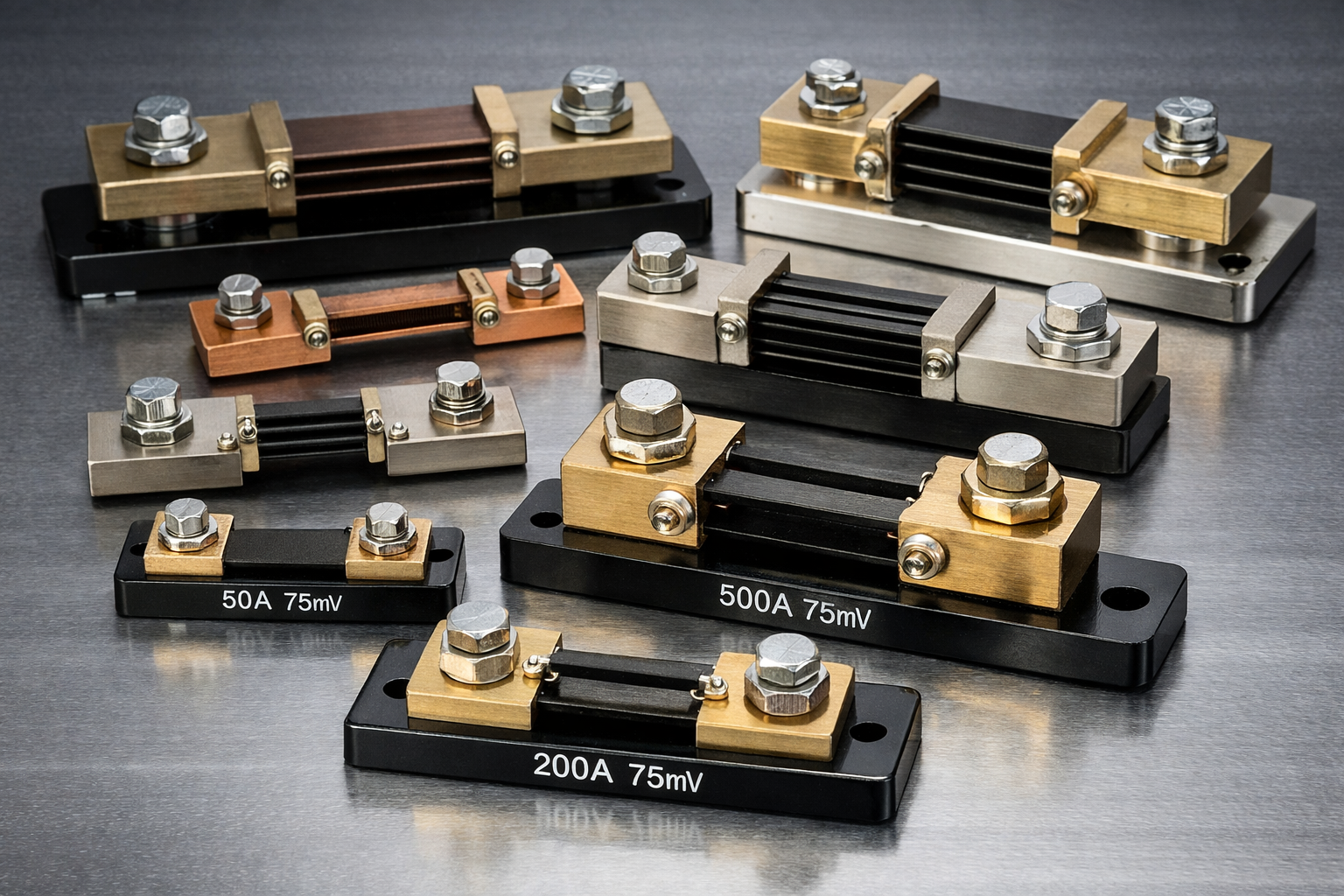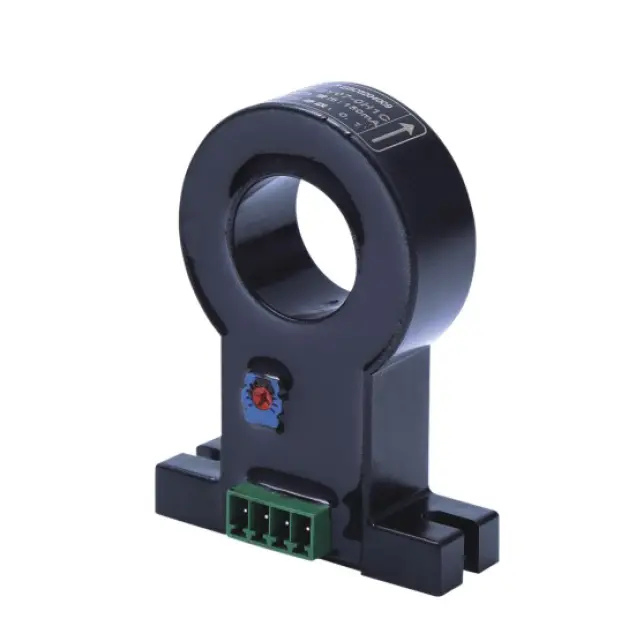The electric vehicle (EV) revolution is transforming the automotive industry, with global EV sales continuing to surge year after year. At the heart of this transformation lies sophisticated power management and monitoring systems, where DC current shunts play a critical role. This article explores how DC shunts are utilized in electric vehicles, their key applications, technical requirements, and future trends.

The Critical Role of DC Shunts in Electric Vehicles
Electric vehicles rely on precise current measurement for safe, efficient operation. DC current shunts serve as the foundation for accurate current monitoring throughout the EV powertrain and battery systems.
Why DC Shunts Matter in EVs
DC shunts in electric vehicles provide several crucial functions:
- Battery management: Monitoring charge and discharge currents to ensure battery health and longevity
- Motor control: Providing feedback for precise motor control algorithms
- Safety monitoring: Detecting overcurrent conditions to prevent damage or hazardous situations
- Energy optimization: Enabling accurate energy consumption calculations for range estimation
- Fast charging management: Monitoring high currents during rapid charging sessions
Unlike other current sensing technologies, DC shunts offer particular advantages for EV applications:
- High accuracy across wide current ranges
- Stability in varying temperature conditions
- Direct current measurement without phase shifts
- Reliability in high-vibration environments
- Cost-effectiveness for mass production
Key Applications of DC Shunts in Electric Vehicles
Battery Management Systems (BMS)
The battery management system is perhaps the most critical application for DC shunts in electric vehicles. Modern EVs contain battery packs with capacities ranging from 40kWh to over 100kWh, operating at voltages between 400V and 800V.
Functions of DC shunts in BMS:
- State of Charge (SoC) determination: By precisely measuring current flow in and out of the battery, the BMS can accurately calculate remaining charge.
- State of Health (SoH) monitoring: Long-term current measurement patterns help determine battery degradation over time.
- Cell balancing: Accurate current measurements enable proper balancing of individual cells within the battery pack.
- Thermal management: Current monitoring helps predict heat generation and manage cooling systems.
| BMS Function | Shunt Requirement | Typical Specification |
|---|---|---|
| SoC calculation | High accuracy | 0.1% – 0.5% accuracy class |
| Current limiting | Fast response time | <1ms response time |
| Fault detection | Wide measurement range | Bidirectional ±500A to ±1000A |
| Thermal monitoring | Temperature stability | <25 ppm/°C temperature coefficient |
| Data logging | Continuous operation | 24/7 reliability rating |
Electric Motor Control Systems
Electric vehicles use sophisticated motor control systems to optimize performance, efficiency, and driving characteristics. DC shunts provide critical feedback for these control algorithms.
Applications in motor control:
- Torque management: Current measurements directly correlate to motor torque output.
- Efficiency optimization: Precise current monitoring allows for optimization of motor efficiency.
- Regenerative braking: Measuring current flow during regenerative braking.
- Overcurrent protection: Preventing damage to motor components.
Fast Charging Systems
With the growing demand for reduced charging times, modern EVs support fast charging at rates up to 350kW. These high-power charging sessions require robust current monitoring.
DC shunt applications in fast charging:
- Charge rate control: Ensuring safe charging currents.
- Thermal management: Monitoring heat during high-current charging.
- Safety verification: Independent verification of charging commands.
- Billing accuracy: Precise measurement for payment systems.
| Charging Level | Typical Current | DC Shunt Requirements |
|---|---|---|
| Level 1 (1.4-1.9kW) | 12-16A | Standard accuracy (0.5%) |
| Level 2 (3-19.2kW) | 16-80A | Medium accuracy (0.2-0.5%) |
| DC Fast Charging (50-350kW) | 125-500A | High accuracy (0.1-0.2%), excellent thermal stability |
Power Distribution Systems
EVs contain complex power distribution networks. DC shunts monitor current flow throughout these networks.
Power distribution applications:
- Main power bus monitoring: Tracking overall vehicle power consumption.
- Auxiliary system monitoring: Measuring current to climate control, lighting, etc.
- Fault detection: Identifying short circuits or abnormal draws.
Technical Requirements for EV DC Shunts
EVs present unique challenges requiring specific shunt characteristics:
Accuracy and Precision
- Accuracy class: Typically 0.1% to 0.5%
- Measurement range: Often bidirectional
- Resolution: High resolution needed
Environmental Considerations
- Temperature range: -40°C to +85°C or wider
- Temperature coefficient: Typically <25 ppm/°C
- Vibration resistance: Must withstand road conditions
- EMI immunity: Resistance to electromagnetic interference
Physical Constraints
- Compact size: Minimizing footprint
- Weight optimization: Lightweight design
- Mounting options: Flexible solutions
- Cooling considerations: Thermal management
Safety and Reliability
- Isolation: Electrical isolation (often handled externally)
- Fail-safe design: Predictable failure modes
- Longevity: 15+ years lifespan
- Automotive certifications: Compliance with standards like ISO 26262
Comparison of DC Shunts with Alternative Technologies
While DC shunts are widely used, alternatives exist:
| Technology | Advantages | Disadvantages | EV Applications |
|---|---|---|---|
| DC Shunts | High accuracy, cost-effective, bidirectional | Power loss, heating, no isolation | BMS, motor control, main power monitoring |
| Hall Effect Sensors | Isolation, no insertion loss, compact | Temp drift, limited accuracy, higher cost | Auxiliary systems, lower-precision |
| Rogowski Coils | No saturation, wide range, isolation | AC only, complex integration | AC charging, some motor control |
| Fluxgate Sensors | High accuracy, isolation, good DC | Expensive, complex, larger size | Premium vehicles, high-precision |
Case Study: DC Shunts in Modern EV Battery Management
A typical 75kWh EV battery pack might use:
- Main battery shunt: High-precision (0.1%) 500A shunt for SoC, charging control.
- Module-level shunts: Smaller 100-200A shunts for module monitoring.
- Auxiliary system shunt: 50A shunt for the 12V system.
The main shunt often features Manganin alloy, temperature compensation, integrated sensors, digital output (CAN bus), and automotive-grade protection.
Future Trends in EV DC Shunt Technology
Integration with Electronics
- Smart shunts with built-in conditioning and digital outputs.
- System-on-chip solutions.
- Wireless capabilities.
Material Innovations
- Advanced alloys with better stability.
- Composite materials for thermal management/weight reduction.
- Nano-engineered surfaces.
Higher Voltage Systems
- Enhanced isolation for 800V+ systems.
- Higher safety ratings.
- Improved arc resistance.
Manufacturing Improvements
- Automated precision manufacturing.
- Advanced quality control.
- Cost optimization for mass production.
Installation and Maintenance Best Practices
Installation Guidelines
- Follow manufacturer specs (torque).
- Ensure adequate cooling.
- Protect from environmental factors.
- Verify clean, tight connections.
- Install in proper orientation.
Maintenance Considerations
- Regular inspection for overheating/degradation.
- Periodic calibration verification.
- Connection tightness checks.
- Diagnostic monitoring.
Frequently Asked Questions (FAQ)
Q1: How do DC shunts affect EV range?
A1: They consume minimal power. Their contribution to accurate BMS and motor control typically results in a net positive effect on range.
Q2: Can DC shunts handle the high currents during fast charging?
A2: Yes, properly specified shunts are designed for fast charging currents with appropriate ratings and cooling.
Q3: How long do DC shunts typically last in EV applications?
A3: Designed to match or exceed vehicle lifespan (15+ years) under normal operating conditions.
Q4: Are DC shunts being replaced by other technologies in EVs?
A4: While alternatives like Hall effect sensors are used, DC shunts remain dominant for high-accuracy applications like BMS due to their precision and cost-effectiveness.
Q5: What safety precautions are needed with DC shunts in EVs?
A5: Proper installation, connection integrity, and system-level isolation are crucial due to high voltages and currents.
Conclusion
DC current shunts are indispensable components in electric vehicles, enabling precise battery management, efficient motor control, and safe charging. As EV technology advances, DC shunts continue to evolve, offering higher accuracy, better integration, and enhanced reliability to meet the demanding requirements of the automotive industry.





